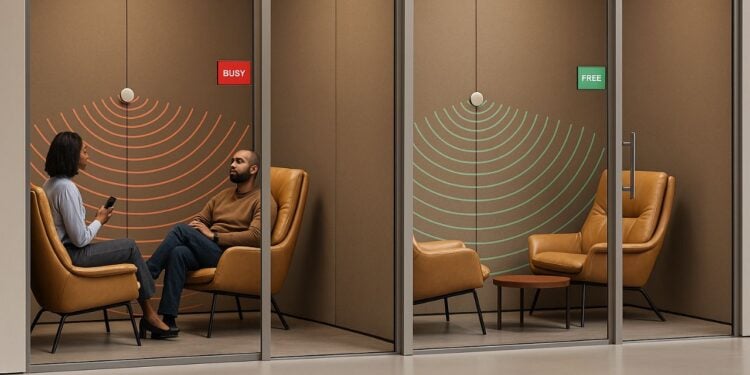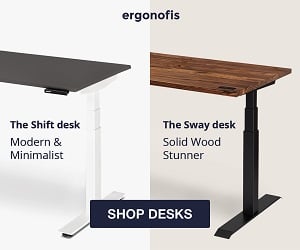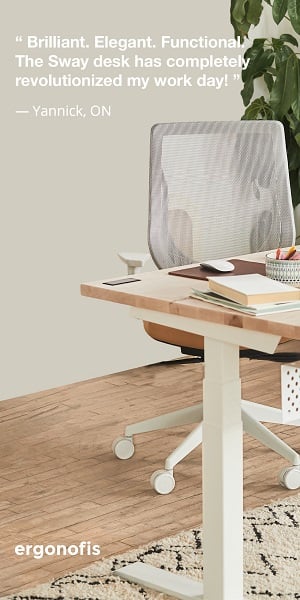- A radar sensor helps businesses understand office space usage and make smarter real estate decisions.
- It offers real-time data on occupancy and environmental conditions without compromising privacy.
- The technology could revolutionize office management in hybrid work environments by reducing wasted space.
Understanding space usage has become one of the biggest challenges for businesses managing hybrid work environments, as underutilized office space is costly. With more employees splitting time between home and the office, understanding how workspaces are being used has become more important than ever.
Without proper data on how often rooms are being used, businesses struggle to make decisions about their real estate.
Should they downsize their office space or reconfigure it to better suit the needs of hybrid teams?
With hybrid work becoming the new norm, more and more companies are confronting this question and scrambling to find effective ways to manage office spaces. A new radar sensor, the Logitech Spot — a discreet, peel-and-stick device — could completely change how businesses monitor their offices.
Could this pebble-sized sensor be the future of invisible workplace management?
Invisible Monitoring for the Hybrid Workforce
Unlike traditional office tech, which often involves cameras or sensors that raise privacy concerns, the Logitech Spot is designed to remain unseen. It uses millimeter-wave radar technology to detect whether a room is occupied, without the need for visible equipment or complex wiring, according to The Verge.
For organizations looking to downsize or reorganize their office space, this kind of technology that provides real-time data could be invaluable.
Companies can get a clearer picture of which rooms are being used, how often, and whether the conditions within those rooms are conducive to productivity.
It’s the kind of insight businesses need when determining if they should reduce their real estate footprint, rethink office layouts, or optimize energy use.
A Non-Invasive Solution to Office Management
Unlike surveillance cameras that can track employees’ movements, the Spot only detects room occupancy. It doesn’t monitor who is in the room, nor does it capture personal data like heart rate or activity.
The radar sensor is designed simply to register whether a space is being used, providing companies with a much less invasive way to monitor their office environment.
For businesses that don’t want to install cameras but still want insights into office usage, this new tech would seem like the solution. It tracks space utilization in a way that’s both effective and discreet.
This can be especially useful for smaller rooms where the presence of a camera might feel too invasive.
What Does This Mean for the Future of Office Spaces?
The implications of the Logitech Spot extend far beyond simple room occupancy tracking.
Businesses can use this tech to determine which areas of the office are essential and which ones can be repurposed, or eliminated altogether. By understanding space utilization in real-time, companies can maximize the efficiency of their office layouts and avoid maintaining unused spaces.
Beyond simple occupancy tracking, it could be used to monitor multiple rooms for temperature inconsistencies, extend meeting reservations when a room is still in use, or even adjust lighting and heating based on room usage.
Could This Technology Become Mainstream?
As companies embrace more flexible work models, the need for smarter office management tools will only grow. While the device is currently geared toward corporate offices, there’s potential for it to expand into other sectors as well, such as smart homes or coworking spaces.
As with any new technology, there are potential concerns about privacy and surveillance. Will employees be comfortable with this level of invisible monitoring in the workplace?
While the Logitech Spot is designed to be non-invasive, any kind of office monitoring can raise questions about employee trust. Companies adopting this technology will need to be transparent about how the data is being used and ensure that employees feel their privacy is being respected.
Clear communication about the benefits of the system and how it can improve office efficiency and employee well-being will be key to overcoming any resistance.
A peel-and-stick radar sensor may be a small device, but its potential to reshape how companies manage their office spaces is huge. By offering an invisible, data-driven way to track office usage and environmental conditions, it presents a smart, efficient solution for businesses looking to optimize their spaces in the era of hybrid work.
As we move further into the future of work, tools like this one and similar ones could be key in helping companies create smarter, more efficient, and healthier workplaces — without the need for intrusive cameras or excessive tech.


 Dr. Gleb Tsipursky – The Office Whisperer
Dr. Gleb Tsipursky – The Office Whisperer Nirit Cohen – WorkFutures
Nirit Cohen – WorkFutures Angela Howard – Culture Expert
Angela Howard – Culture Expert Drew Jones – Design & Innovation
Drew Jones – Design & Innovation Jonathan Price – CRE & Flex Expert
Jonathan Price – CRE & Flex Expert














